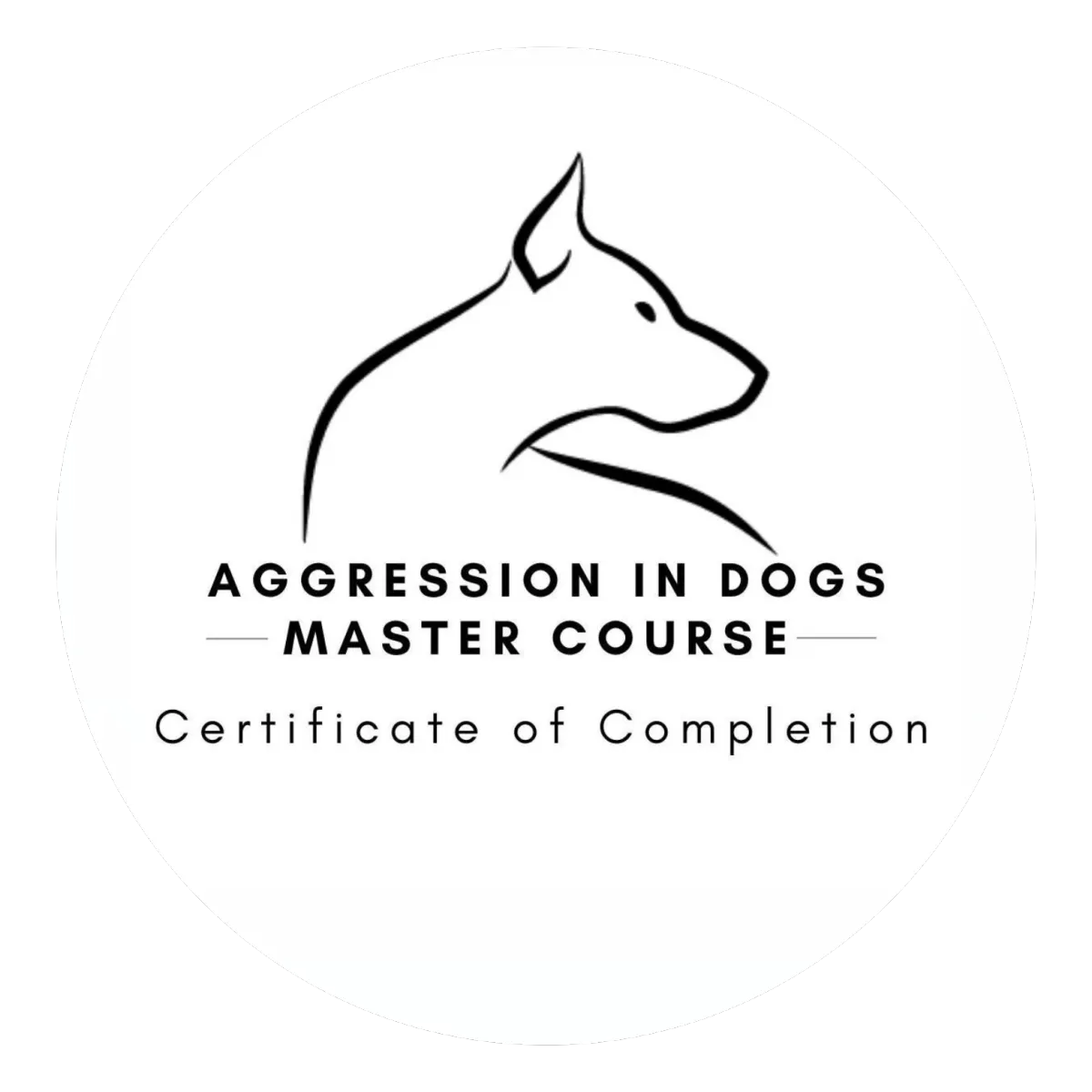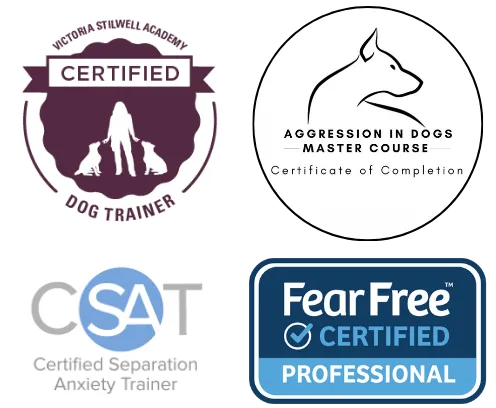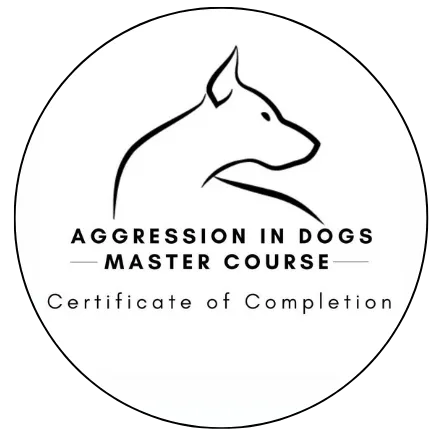Understanding and Using
Markers
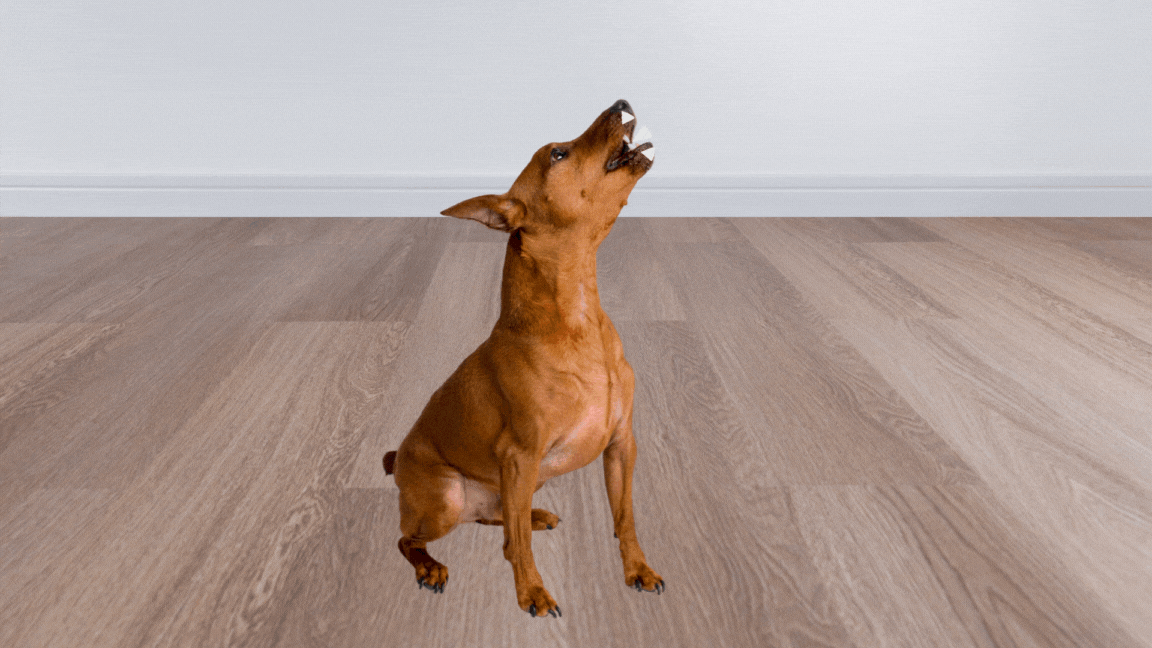
What is marker training?
Marker training uses a special sound or word to let your dog know the exact moment they've done something you like. This could be as simple as a click sound from a clicker or a specific word like "Yes!"
Every time you use the marker, you must follow it up with a reward.
Markers
help your dog identify the behaviors you want

Rewards
motivate your dog to do that behavior again.
Most Common Types of Markers
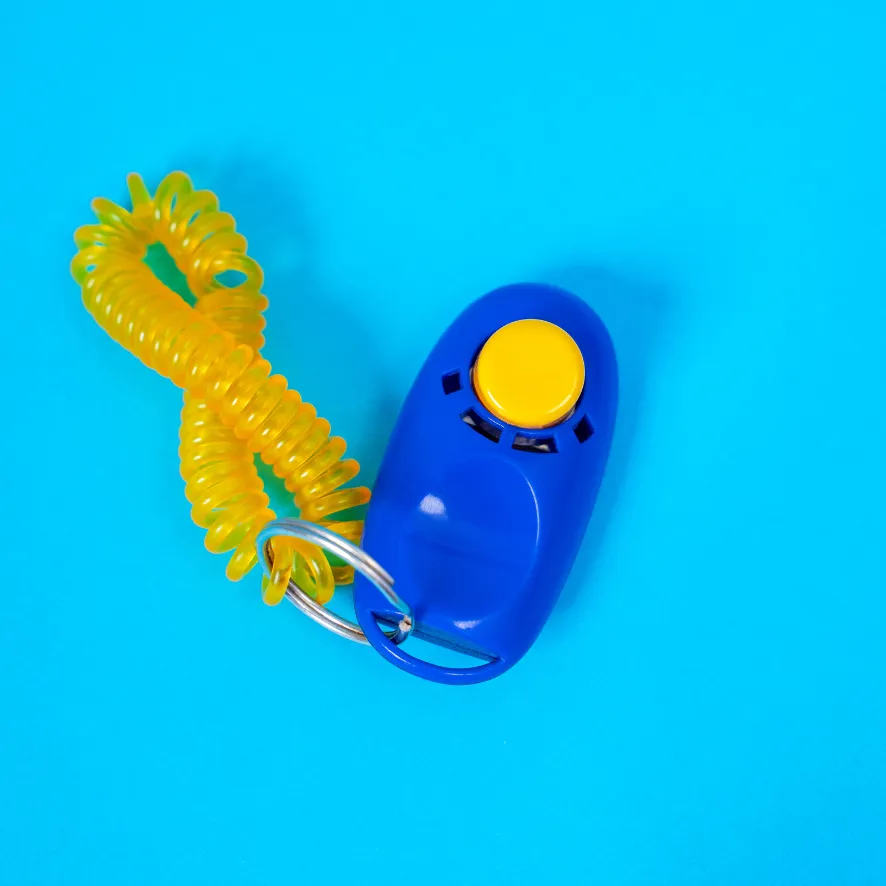
Clicker

Hand Signal

Verbal Signal
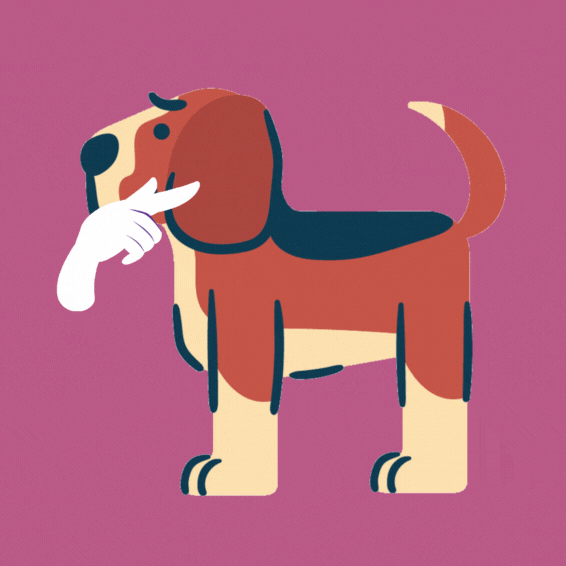
Touch
Choose a single marker and be consistent with it. Using the same marker every time helps your dog learn.
Most Common Types of Rewards
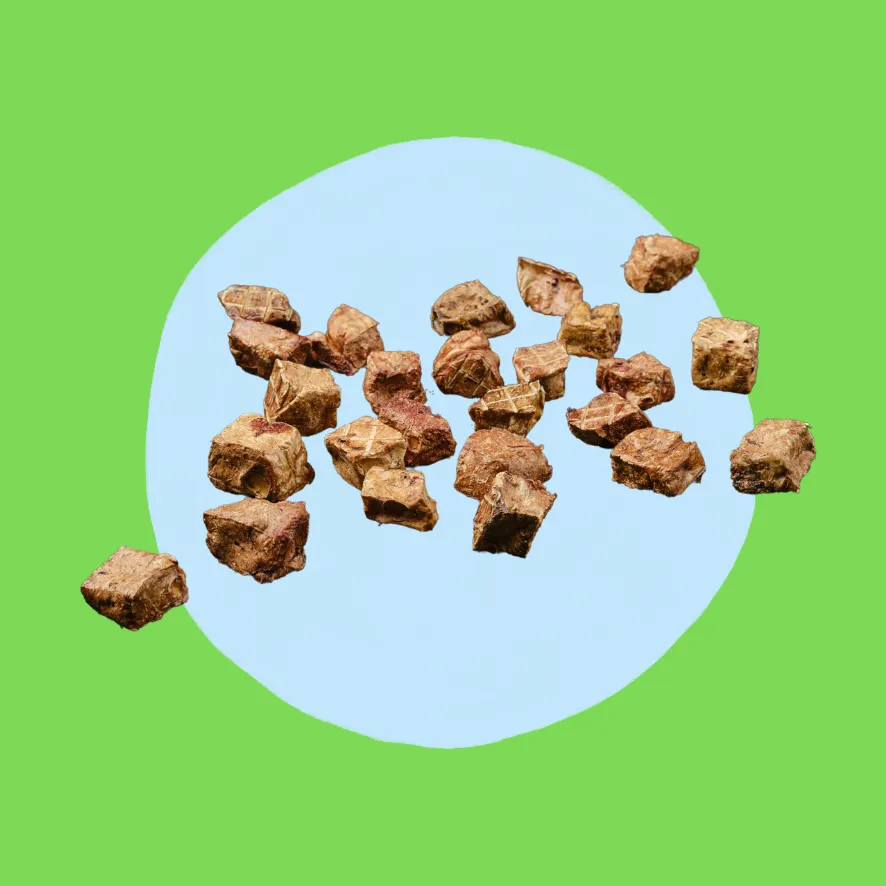
Treats
Best for most dogs, especially for new cues.

Toys
Best for toy-motivated dogs toy-who don't resource guard.

Pets / Affection
Best when reducing marker use.
No matter what reward you choose, make sure you reward your dog after every marked behavior.
What are the benefits
of marker training?
Works for ALL dogs and behaviors.
Effective for both behavioral modification & skill-building
Clear communication
Accurate timing helps dog understand rewarded behaviors
Positive reinforcement encourages desired behaviors
Rewards motivate & encourage learning
Makes training enjoyable & effective
Clear markers help reduce confusion
Builds your dog's confidence
Fosters a strong relationship between you & your dog
Helps maintain consistency in training
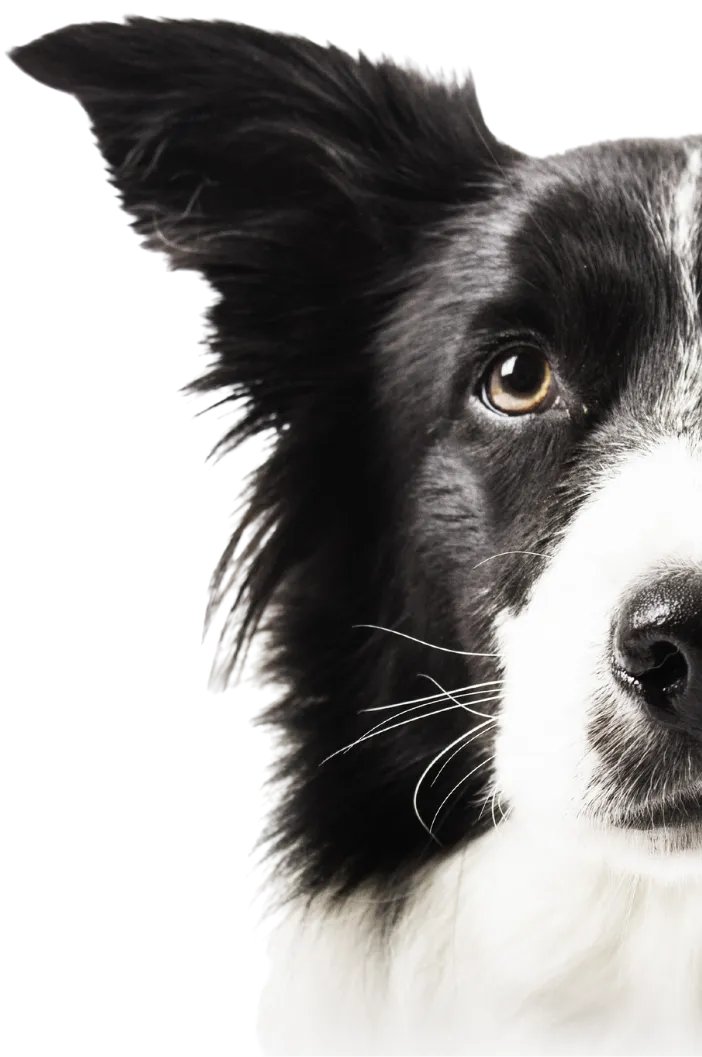
My Top Picks
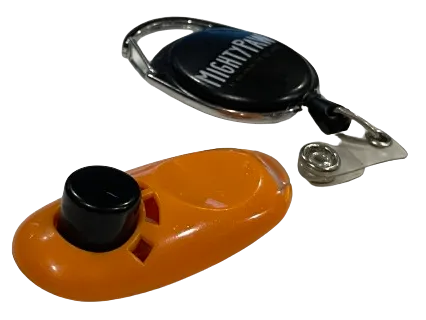
Mighty Paw Clicker
Retractable cord
Lanyard
Clips to belt or pant loop

EveryYay Clicker Ring
Hands-free training clicker
Easy to hold for accurate timing
Small size fits most

Full Moon Treats
Human-grade & USDA organic
14 oz
Beef & Chicken flavors
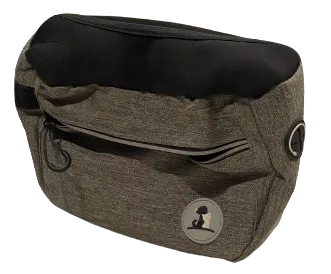
Treat Pouch
Waterproof & large capacity
Multiple ways to wear
Closes automatically
Tips for Effective Marker Training



Timing is everything.
Try to mark during the exact behavior at the exact time they do it. Give the treat within 3 seconds of the mark.



Reward every time.
Each mark must mean a guaranteed treat. So even if you accidentally mark, give your dog the reward anyway. The effectiveness of the marker is in the predictability of the reward.


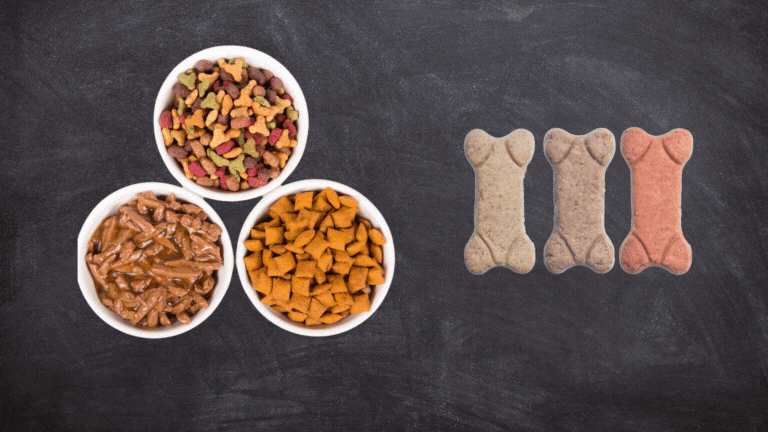
Keep the treats small.
When using food, marker training requires lots of treats. Keep treats small to manage weight. You can even use kibble sectioned from their regular meal instead of extra treats. Training treats are also available, specially formulated with consideration for size and calorie content.


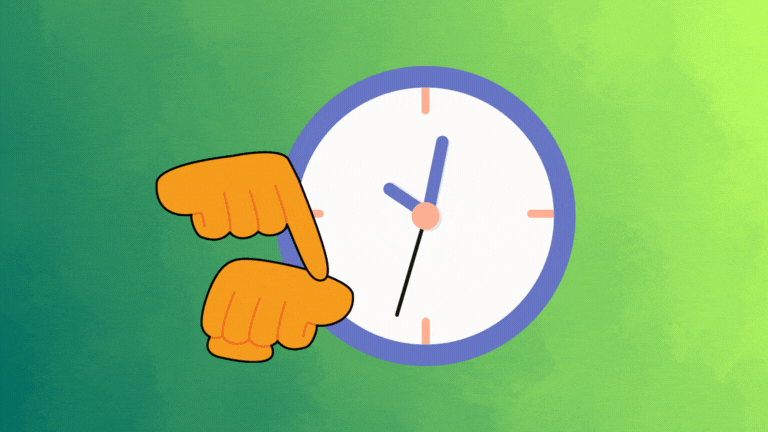
Time sessions appropriately.
Training requires a bit of effort for both you and your dog, and can be mentally tiring. Every dog is an individual, but here's some general tips:
Puppies: 5 to 8 minutes, multiple times a day
Adult Dogs:15 to 30 minutes.
Advanced Training: Up to 45 minutes if dog remains engaged.
Frequency: Short, frequent sessions are usually more effective.
Watch for signs of fatigue or disinterest. If your dog starts to lose focus, it's time to wrap up the session.



Always end on a positive note
Finish with a successful response from the dog and a mark & reward. Even better, end with a jackpot! A "jackpot" is a big, extra reward given when your dog performs exceptionally well. For instance, if your dog nails a difficult trick, you might give them a whole handful of treats as a jackpot or a longer play session!



Phase out the marker.
A marker is only for teaching and training new behaviors. Once your dog reliably responds to the cue, it’s time to phase out the marker (and slowly phase out the food rewards as well).



When using toys as rewards:
Designate specific toys for training only.
Have a variety of toys to keep your dog engaged
Use high-value toys your dog loves.
Choose the right-sized and durable toys.
Teach self-control with toys. Use cues like "drop it" or "leave it" to ensure your dog can play with the toy appropriately.
Have backup reward options ready, including treats and praise, in case your dog loses interest in the toy during training.
Frequently Asked Questions
If I use a marker and treats for training, do I ALWAYS have to use a marker and treats?
Nope! Marker training is a teaching technique. You use it to reinforce the behaviors you are teaching your dog. Once your dog reliably performs these behaviors, you can phase out your marker. However, continued rewards are recommended as feedback so your dog knows what you want them to do. Food treats aren't the only rewards. You can reward your dog with affection, play, pets, and whatever else the dog finds reinforcing!

How do I choose a marker?
Pay attention to what your dog responds to best, and choose what feels comfortable for you. Additionally, every dog is an individual. Consider your dog's unique needs (i.e. deaf, blind, deaf blind) and assess their learning strengths. Clickers are precise and neutral. Verbal cues are convenient. Hand signals can be great for visual learners. Choose a single marker and be consistent with it. Using the same marker every time helps your dog learn.
How do I know which reward to use?
Observe what your dog responds to best. Dog training uses a slide scale of rewards. For example, I love vanilla ice cream. I also like apple slices, just not as much as vanilla ice cream. Higher value rewards are more effective at motivating your dog in more challenging scenarios.
Food is usually the most effective way to teach a new behavior. You can phase out food to toys or attention as your dog builds their skills in what you are teaching. If you have a dog with digestive challenges, consult a veterinarian to assess what foods are safe for training.
Do I need to "charge the marker" before every session?
Nope, the first few sessions when you introduce the marker for the first time, you should focus only on charging your mark (mark and treat rapidly). Keep these sessions short and frequent, less than 5 minutes, maybe twice a day if you can. This allows the dog to associate the marker with a reward. After they make this association, you only need to re-charge the marker if it's losing its meaning to your dog.
Can any dog be trained using marker training, including puppies?
Yes, virtually all dogs can benefit from marker training. It's a gentle and humane training method that works well with dogs of all ages, breeds, and temperaments.
Do I need any special equipment for marker training?
The primary tool for marker training is a marker signal; the most common markers I've seen used are a clicker or a chosen word (i.e. "Yes" or "Good"). You'll also need treats or rewards that motivate your dog. You may also find it helpful to have a treat pouch available for training sessions.
My dog is not responding to the marker. What do I do?
Dogs have different learning speeds. If your dog doesn't seem to respond, be patient & adjust your training approach. Here's some tips:
Consistency: Stick with the same marker throughout training. This makes it easier for your dog to learn because it's predictable.
Neutrality: Keep your chosen marker neutral in tone and avoid excessive excitement. Consistent markers, like a clicker or a a flashing light, are generally recommended for marker training because they sound, feel, and look the same every time.
Exclusive Use: Use the chosen marker exclusively for marking desired behaviors during training sessions. For example, if you choose the word "good", be careful about saying "good dog" when you get home or you could be inadvertently marking undesired behavior.
Use high-value rewards: Your dog may need more motivation, especially in the beginning when learning new skills.
Accurate timing: The treat should always follow within 3 seconds of your mark. Any rewards after that may impact the association you're trying to teach your dog.
If you've implemented these tips and are still struggling, it's possible that you are advancing too quickly in your training. For example, if you find your dog is not responding to the marker outside when other dogs walk by, you may need to go back a step. They may need more practice with the core behavior indoors before introducing outdoor distractions. You can always schedule a consult with me for support!
Can marker training be used for behavioral issues, like excessive barking or aggression?
Yes, marker training can be effective for addressing various behavioral issues. However, it's often recommended to seek guidance from a professional dog trainer for complex issues. You can schedule a consult with me as well!
Are there any potential downsides to marker training?
Marker training is generally considered a positive and effective method. However, it requires consistency and patience. There is a learning curve - both dogs and their humans need time to learn marker training skills, particularly timing. Additionally, some dogs might become overly focused on treats or rewards, so it's crucial to gradually reduce these after your dog has mastered the desired behavior.
What if my dog is scared of the clicker sound?
Some dogs are particularly sensitive to loud noises. If your dog is afraid of the clicker sound, you can:
select a different marker that is more appropriate for your dog
try using a softer clicker or muffling the sound by clicking it inside your pocket. You can try to gradually increase the volume as your dog becomes more comfortable.
Make sure your dog associates the sound with positive rewards.
How long does it typically take to see results with marker training?
The speed of results varies depending on your dog's age, temperament, your consistency, and the complexity of the behavior being trained. In many cases, when techniques are used correctly, you can see improvement within a few sessions, but consistent training over time is usually necessary for lasting results.
Can I use clicker training for advanced behaviors, like agility training or scent work?
Yes, clicker training can be applied to advanced training activities like agility, scent work, and obedience competitions. The precision and clear communication it offers make it a valuable tool for teaching complex behaviors and tasks.
Are there any situations where clicker training may not be the best approach?
Clicker training is generally effective, but it may not be suitable for dogs with severe anxiety or fear issues. In such cases, it's advisable to try another marker or consult with a professional trainer who can determine the best training approach for your dog's specific needs.
Contact Us:
In-Person Service Counties:
Essex, Morris, & Passaic counties
We are located in:
Parsippany-Troy Hills, NJ 07054
DISCLAIMER: Behavior modification is a collaborative process that depends on the consistent implementation of training techniques by the owner. While we specialize in fostering positive behavioral changes, no trainer can guarantee specific outcomes or "cure" a dog's behavior. As behavior is influenced by numerous factors, including environment and individual circumstances, the dog's behavior remains the responsibility of the owner.

© Copyright 2022. Born to Be Dog Training LLC.
All rights reserved.




